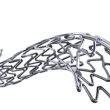For years, treating dyslipidemia mainly focused on reducing LDL cholesterol (LDL-C) with statins, which had shown benefits in reducing atherosclerotic cardiovascular disease (ASCVD). Lipoprotein(a) [Lp(a)] is a form of apoB-containing lipoprotein bound to a hydrophilic, highly glycosylated protein called apolipoprotein(a) [apo(a)]. Circulating levels of Lp(a) are genetically determined, and are hardly affected by eating habits...
Long-term Results of Coronary Bifurcation Lesion Treatment in Diabetic Patients
The effects of diabetes on patients with coronary artery disease are well-known, and their outcomes after angioplasty are less favorable, with a higher rate of restenosis, recurrent acute myocardial infarction, and stent thrombosis. Despite advances in drug-eluting stents and procedural techniques, the treatment of coronary bifurcation lesions in diabetic patients shows less positive clinical outcomes...
Outcomes of the Use of Drug Coated Balloons in the Treatment of De Novo Coronary Lesions
Drug coated balloon (DCB) angioplasty offers a novel strategy for treating coronary artery disease. Studies assessing this strategy have shown clinical outcomes comparable to drug-eluting stents’ (DES) in patients with in-stent restenosis and de novo disease in small vessels. However, evidence for the use of DCB in large coronary vessels is limited. This observational, retrospective study DCB...
Drug-Coated Balloons (DCB): Sirolimus vs. Paclitaxel in De Novo Lesions in Small Vessels
The use of drug-coated balloons (DCB) offers the advantage of avoiding permanent stent implants, thus reducing the incidence of in-stent restenosis (ISR), neoatherosclerosis, and late in-stent thrombosis. Additionally, the use of DCB reduces the duration of dual antiplatelet therapy. Current evidence supports the use of DCB for ISR treatment (Class I) compared with drug-eluting stents...
TCT 2023 | ISAR-DESIRE 3: 10-Year Results
In-stent restenosis (ISR) remains the primary limitation of percutaneous treatment for coronary artery disease. The strategy to address this limitation involves the use of drug-eluting stents (DES) or drug-coated balloons (DCB), both of which have proven to be effective and safe therapeutic alternatives. Despite current recommendations, treating ISR continues to be a challenge, and clinical...
Intrastent Restenosis in Ostial Lesions in the Right Coronary Artery: Predictors of an Unfavorable Location
Predictors of intrastent restenosis in the right coronary artery ostium. The ostium of the right coronary artery (RCA) presents certain histological aspects. Atherosclerotic and fibrotic plaques in this area contain an abundance of smooth muscle, collagen, and a certain degree of calcification, along with thicker adventitia. Additionally, it has certain anatomical aspects such as poor...
Diffuse Coronary Artery Disease: One-Year 48mm XIENCE Skypoint Outcomes
Long 48mm Stent XIENCE Skypoint in the treatment of diffuse CAD Long coronary artery lesions often involve complex decision making since they can be treated either with a long stent or with shorter overlapping stents. Both in registries and meta-analysis, the overlapping technique has been associated to increased target vessel revascularization and increased radioscopy time,...
PICCOLETO-II: Drug-Coated Balloons in Small Vessels
Use of drug-coated balloons vs. drug-eluting stents in small caliber vessels. The constant advancements in coronary device technology have significantly reduced complication rates (such as that of restenosis). However, there are gaps where a high number of undesirable events prevail, such as small vessel disease (SVD), for which, in previous studies up, the rate of...
The most read scientific articles in interventional cardiology in February on our website
Below, we share February’s most read scientific abstracts in interventional cardiology at solaci.org. Can Drug Coated Balloon Be a Valid Option for Small Vessels? One of the challenges of percutaneous coronary interventions (PCI) are <2.5 mm vessels, since complications and restenosis complications rate are higher than with >3.0 mm vessels. Is Using Drug-Eluting Balloons and...
BIODEGRADE: Does Stent Design Affect Long-Term Clinical Results?
Recent studies have shown that drug-eluting stents with biodegradable polymer and ultrathin struts are safe and effective, including low rates of stent thrombosis. This is why researchers conducted the BIODEGRADE (Biomatrix and Orsiro Drug-Eluting Stents in Angiographic Result in Patients With Coronary Artery Disease) study, which showed the non-inferiority at 18 months of ultrathin biodegradable polymer...









